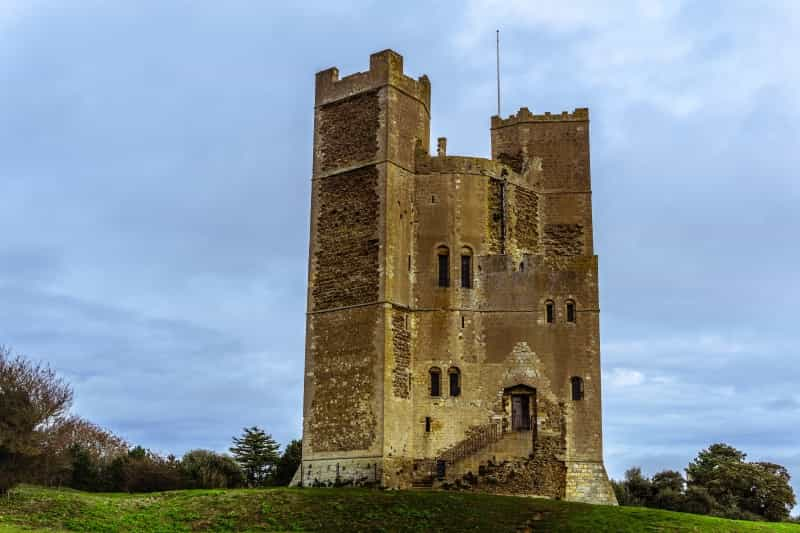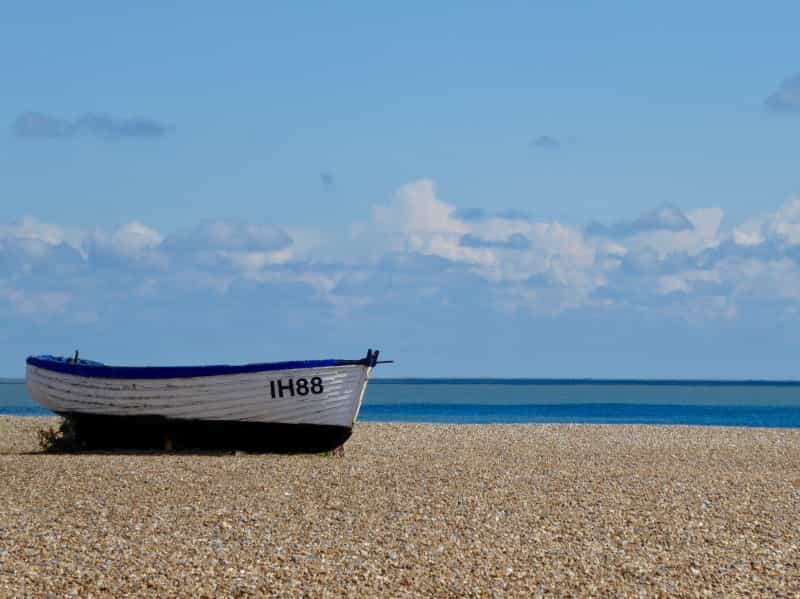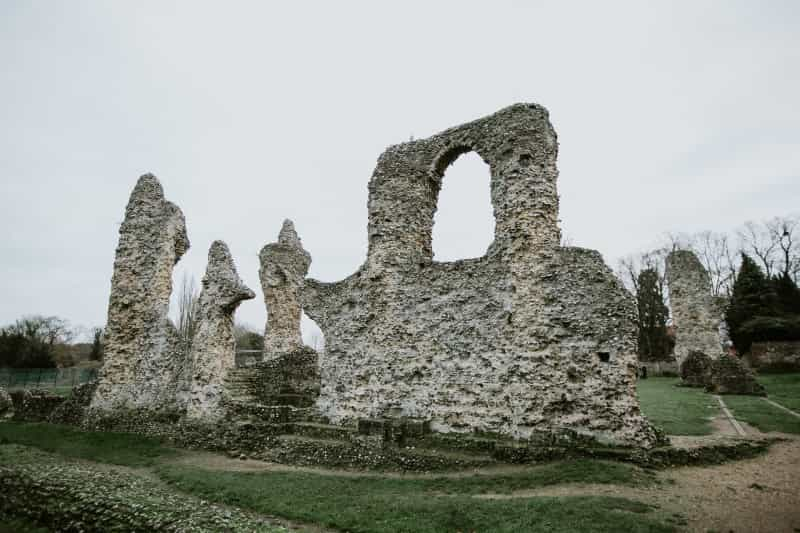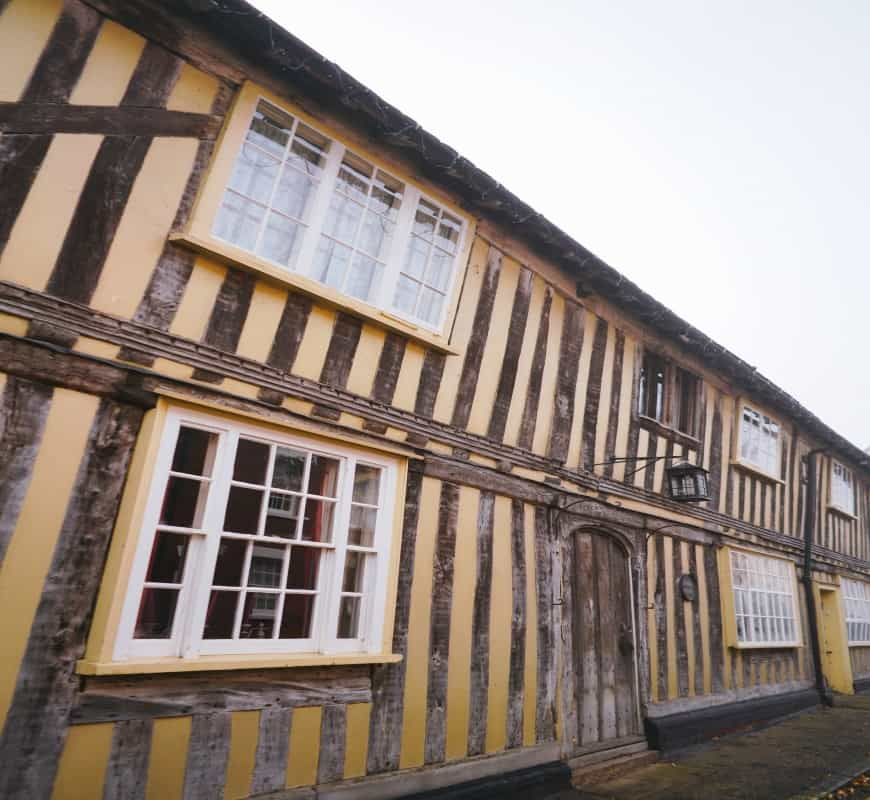7 Best Things To Do In Suffolk

Coastline, castles, medieval towns, gorgeous gardens – there’s certainly no shortage of things to do in Suffolk. Whether you’re a local looking for something to do close to home or a visitor planning outings during a holiday, we’ve canvassed opinion among our team to come up with this list of the best days out in Suffolk.
If you’re visiting the area, it’s well worth considering an outdoor stay for your accommodation. Suffolk is one of the UK’s warmest and driest counties, so it’s a fine spot for camping and glamping breaks – and the lovely scenery helps too, of course. From wild camping pitches to stylish cabins with hot tubs, Pitchup has something for every taste – take a look at the full range to find a place you like the look of.
Sutton Hoo
As the site of ancient royal burial grounds, Anglo-Saxon ships and Viking sieges, Sutton Hoo is firmly in the history books and one of Suffolk’s most famous destinations. The site is now managed by the National Trust, which has installed a 17-metre viewing platform by the royal burial ground, and created a fascinating exhibition in the High Hall. From pottery to weaponry to jewellery, there is a vast array of artefacts to admire here, along with some interesting short films – together they create a vivid impression of Suffolk life in the 6th and 7th centuries.
Away from the main exhibition there are several themed walking trails around the site, and a play area where younger visitors can let off steam. There are often special events and activities for kids too – crafts, dressing up and treasure trails are often available at weekends and during school holidays.
Framlingham Castle
Continue north-east from Sutton Hoo and you’ll see the 800-year-old walls of Framlingham Castle rise into view. Surrounded by rolling parkland and lake, this magnificent and imposing Norman structure was for generations home of the Dukes of Norfolk and also the place where Mary Tudor fled to in order to be proclaimed Queen of England in 1553. Now managed by English Heritage, it’s a historic place indeed.
Take the wall walk around the castle, up at a height of 10.5 metres, and survey the scenic unfolding of the Suffolk countryside. While you’re up there, you might even try counting the multitude of 12th-century and Tudor chimneys, which are the oldest surviving examples in the country.
To complete your visit you can also visit the 17th-century workhouse, follow the folktale creatures trail, take part in hands-on themed activities, peruse the shop and/or settle in for Tudor-styled dishes at the Castle Café.
Orford Castle
Of course, Framlingham is not the only castle you can visit in Suffolk. Head towards the coast between Aldeburgh and Orford and you’ll reach the remarkably intact 12th-century Orford Castle. This impressive polygonal structure has one of England’s most complete keeps; the view from the top is a wonderful vista looking seaward over Orford Ness National Nature Reserve.
Inside, explore a labyrinth of passages and vital wells in the basement and admire Roman brooches, medieval coins and historic borough regalia in the Upper Hall unit, then complete your education in the Orford Museum in the castle’s top level.
There’s no café or toilets at this English Heritage site, but there is a gift shop and a picnic area, so bring your sandwiches along for an outdoor lunch. For a full day out, combine your castle tour with a walk through the nature reserve or a trip to Orford Ness beach.

Aldeburgh
A few miles along the coast is the lovely seaside town of Aldeburgh, home to one of Suffolk’s most popular beaches and, famously, the home of the celebrated composer Benjamin Britten.
Start your visit with a stroll along the promenade, with pastel-coloured 19th-century villas on one side and the pebbled, dog-friendly beach on the other. By the prom also are the 16th-century, Grade I-listed Aldeburgh Museum, the Aldeburgh Beach Lookout and Art House and the beachside Martello Tower, an early 19th-century fort structure built as defence against Napoleon’s armies (but thankfully never used) – and the beach is home to Maggi Hambling’s four-metre Scallop sculpture.
Bite to eat? Try out some of the fish and chips for which Aldeburgh is also well known. There are a variety of options to choose from along the promenade, ranging from takeaways to pubs to smarter dining rooms, all of which are highly rated.
Aldeburgh’s high street is also worthy of a stroll for its boutiques, used-book shops and antiques; if you’re not already full of fish and chips, perhaps one of the town’s excellent range of pubs, cafés and restaurants will have something to tempt you.

Historic Bury St Edmunds
A thousand years of history, architecture and culture come together in one mid Suffolk location at Bury St Edmunds, where a full day out can be easily spent among its landmarks, shops, eateries, art galleries and other attractions.
On a sunny day, a great place to start is the town’s Abbey Gardens. Once the grounds of one of England’s richest, largest and most powerful Benedictine monasteries, there are now 14 acres of award-winning gardens here to lose yourself in. With fabulous floral displays, a rose garden, a water garden and a sensory garden among its attractions, it’s a lovely place for a walk – and, best of all, it’s completely free to visit.
While you’re there, look out for the 11th-century remains of the abbey itself, including the 14th-century abbey gate and the Norman Tower, the oldest Norman building in England.
After that, there are plenty more interesting attractions around the town, including St Edmundsbury Cathedral (the only cathedral in Suffolk), the Suffolk Regiment Museum, Greene King’s Westgate Brewery (for tours), the Theatre Royal and the city’s Blue Plaques Trail, taking you through the households and haunts of an eclectic mix of historical figures (Charles Dickens, for one).
Food and drink? There are plenty of excellent options. And for a real taste of the area, keep it authentic with Bury St Edmunds’ markets (on Wednesdays and Saturdays) for all forms of local produce, food stalls and special offers.

The Brecks
Rainy day or not, this is the best reason to get out into the open air. ‘The Brecks’ is short for ‘Brecklands’, and it’s a huge swathe of open space that includes some of the best preserved landscapes in Suffolk (and stretching into neighbouring Norfolk).
It’s a slightly surreal landscape and no less attractive for it: purple heathland, gnarly Scots pines, rare wildlife and endless winding trails taking you into its heart, Thetford Forest. If you want to spend a few days exploring this superb walking area, base yourselves around the ancient flint-mining village of Brandon or nearby Elvedon.
Wool Towns
Suffolk’s countryside is fabulous, but the county is also home to some of the best-preserved Tudor-timbered villages in all of Britain; you’d be hard pressed to find any prettier settlements anywhere in the country. Lavenham, Clare, Long Melford, Kersey, Cavendish… all sprang from Suffolk’s enriching wool trade in the 15th century and now count among the UK’s most scenic destinations to explore.
Perhaps most famous is Lavenham, commonly considered as England’s best-preserved medieval village, with more than 350 listed buildings. Just to poke around its narrow laneways and crooked cottages is to enter a time capsule and envision Suffolk life as it was 600 years ago.
Dotted amidst the county’s rolling countryside, Suffolk’s wool towns are fantastic day trip destinations, or waymarkers for a few days’ journey on foot, with plenty of places to stop and sample local East Anglian beers and food.

This short list of Suffolk’s best days out only scratches the surface of what this wonderful county has to offer – for more ideas, check out our guides to Suffolk’s best beaches and some great places to walk. Camping and glamping are both popular activities around here too – by staying outdoors you’ll be able to enjoy the fresh air and views from sunrise all the way through to sunset, and you’ll keep your holiday costs down too. Take a look at Pitchup’s full range to find a place that suits you.